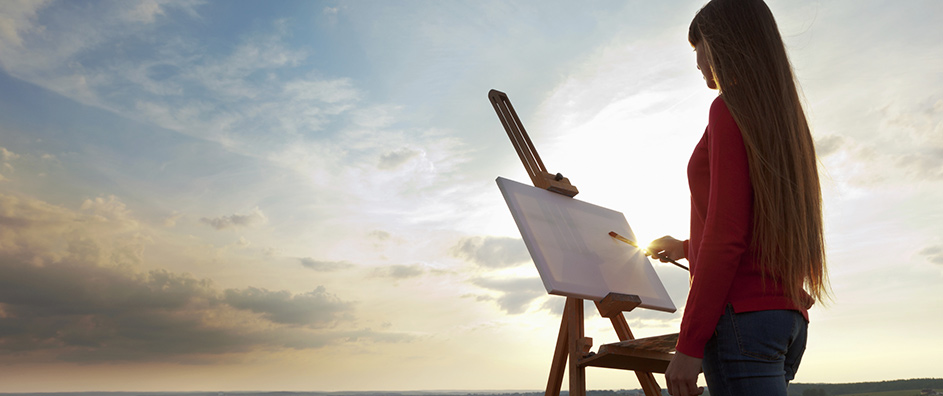Art and inspiration are perennial subjects of contemplation, attracting interest from philosophers, theologians, and creatives alike. Within the context of the Baha’i Faith, an illuminating perspective emerges. One finds that the essence of art may not merely be a fleeting dalliance with pigments and sounds, but rather a profound expression of the human soul’s intrinsic connection to the divine. This discourse embarks on an exploration of the Baha’i teachings surrounding the origins of art and the nature of inspiration—unveiling promises that provoke a transformative shift in perspective.
At the heart of Baha’i philosophy lies the assertion that human beings are inherently endowed with a spirit that yearns for beauty, truth, and deeper understanding. The teachings advocate that art serves as a bridge between the material and the spiritual realms. When one engages with art, whether as a creator or an observer, there exists a possibility to transcend the mundane and engage with the sublime. This intrinsic drive propels the artist, who becomes a vessel through which divine inspiration flows.
Delving into the essence of creative impulses, one encounters the notion that all forms of genuine art originate from God. This is distinctly articulated in the idea that inspiration is a gift from the divine, a manifestation of the Creator’s essence that resonates within the hearts of human beings. As Baha’is hold that each person has a unique channel to the divine, the creative process becomes deeply personal yet universally interconnected. Thus, the query arises: how does one hone this divine link to cultivate artistic expression?
The first guiding principle emphasized within Baha’i teachings is the necessity of self-purification. The act of creating requires an elevation of one’s inner self to a state of spiritual readiness. By engaging in reflective practices, such as meditation and prayer, artists can still the cacophony of worldly distractions and attune their hearts to higher vibrations. In this state of clarity, the artist becomes more receptive to the subtleties of inspiration, akin to a clear vessel waiting to be filled with exquisite ideas.
Moreover, the Baha’i Faith espouses that collaboration and the sharing of creative energies can greatly enhance artistic endeavors. Artistic collaboration is not merely an exercise in teamwork, but it is also an act of collective spirituality. When artists come together, exchanging ideas and insights, the resultant creativity is often magnified, enriching both individual expression and the communal fabric. Every brushstroke or note contributes to a larger tapestry of creativity that is imbued with collective intention and divine resonance.
Furthermore, Baha’i teachings illuminate the significance of service as a fundamental aspect of art. An artist is seen not merely as a creator for personal gratification, but as a servant to humanity. Through the lens of service, the intention behind artistic expression is paramount. The artist is encouraged to engage with societal concerns, channeling their creativity toward uplifting others and highlighting the beauty of unity in diversity. This altruistic approach engenders a resonance that transcends individualism, enriching the broader social milieu.
As one navigates the intricacies of inspiration, the Baha’i perspective underscores the potential of art to act as a vehicle for spiritual education. Artistic endeavors can present lofty ideals, encapsulating themes of justice, unity, and love. Each piece of art has the capacity to provoke thought, evoke emotion, and stimulate the consciousness of viewers. The transformative power of art lies in its ability to prompt reflections on values that bind humanity, stirring audiences toward the aspiration of higher principles.
Another enriching dimension to the Baha’i viewpoint on art is the emphasis on beauty—both in form and intention. The creation of art is an invocation of beauty, an aspiration that resonates deeply within the spirit. Consequently, the aesthetic dimension cannot be divorced from the purpose behind the work. Baha’is believe that when artists generate works that embody beauty, they engage in a reflection of the divine attributes. Thus, the pursuit of beauty becomes a path toward spiritual enlightenment, interweaving the artist’s inner world with outward expressions of divine love.
The act of creating, imbued with deep intention and spirituality, can ultimately impact not only the creator but also communities, societies, and the world at large. In a world rife with conflict and discord, art serves as a catalyst for dialogue, fostering understanding and healing. Baha’i teachings advocate for the role of art as a peacemaker, capable of transcending cultural barriers and uniting disparate voices through shared experiences and emotional truths.
In examining the intricate relationship between art and inspiration through the prism of Baha’i teachings, one realizes that creativity extends far beyond technical skills or aesthetic appearances. It invites a robust engagement with spiritual values, communal involvement, and the quest for beauty. By embracing these principles, artists can embark on a transformative journey, imbibed with the promise of inspiration that serves both the self and the collective.
In conclusion, exploring the origins of art and the nature of inspiration through Baha’i teachings reveals a captivating interplay between the mundane and the divine. It challenges individuals to reconsider their creative practice, compelling them to align with higher principles that benefit humanity. This exploration invites artists and enthusiasts alike to delve into their creative endeavors with renewed reverence, igniting a spark that has the potential to illuminate the world—the true essence of art and inspiration.
